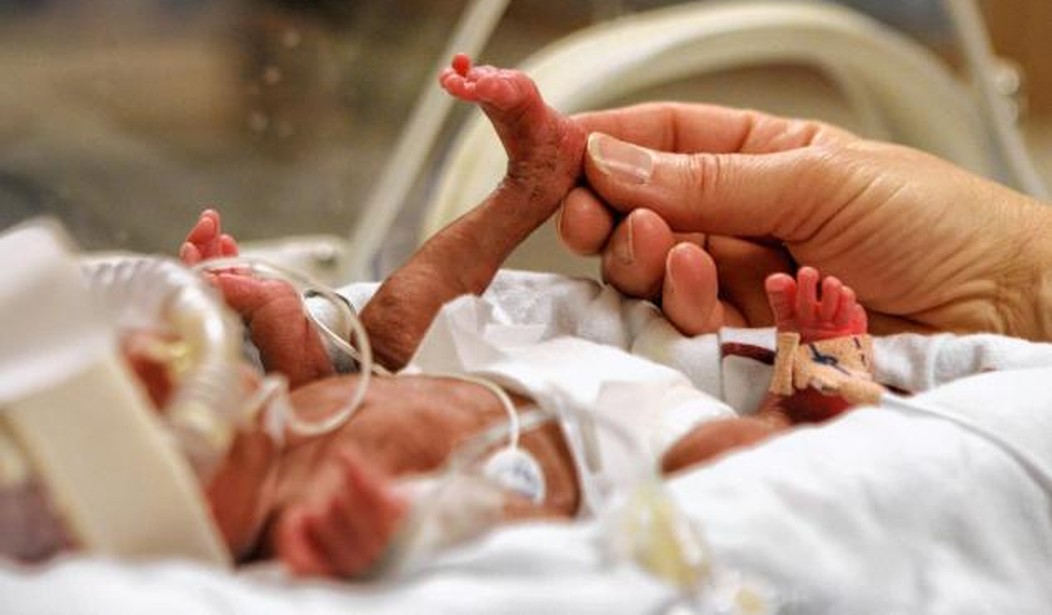Over time we have become a nation of subjects, not citizens fully engaged in our own governance. I say this not as a rhetorical device but to point out the enormous areas of our life where we have ceded sovereignty over ourselves not only to elected officials… a necessary evil in any developed society… but to a wide variety of unelected experts.
Perhaps nowhere in our lives is this more the case than in our medical care. Bureaucrats in your insurance company may not pay for certain treatments because you just aren’t that valuable of a customer. Bureaucrats in the FDA may not allow you to have access to a developmental drug for your fatal ailment because the treatment hasn’t been proven safe — losing sight of the point that safety is the least of your concerns. We have accepted these incursions into our lives because we have been sure that in most cases your doctor would approach your care with a bias towards saving your life, not minimizing his workload.
No more.
As we have entered the age of Obamacare, this relationship with our technocratic masters has become more acute. You are no longer deemed competent to purchase an insurance product that meets your needs, medical and financial. Rather the government, acting in loco parentis, tells you what you need. And, at some point, the work product of a government panel will tell your physician whether to treat you or let you die. (See In Britain’s Liverpool Pathway We Get a Preview of Obamacare and Hell.)
Or your doctor may decide it is just a crap load of work to keep you alive and even if you do live, your life wouldn’t be worth a whole lot.
That is what I encountered in a story that appeared in today’s Washington Post titled Newborn baby is borderline; should the doctor resuscitate?
What was supposed to be a heartwarming story, full of pathos and medical heroism, struck me as a vignette from Hell. It underscored the degree to which the medical profession casually takes it as its right to make decisions best left to the parents and the patient.
The newborn resuscitation room was uncomfortably hot — the thermostat was set high to prevent a just-born baby’s body temperature from dropping rapidly. Our neonatology team was finishing up paperwork on a baby we had just resuscitated and stabilized when a nurse from obstetrics popped her head in: “Don’t leave yet! A 23-weeker just rolled in; she might deliver soon!”
The nurse practitioner on the team groaned. There was no need for him to say anything more. All of us in the room felt exactly the same. A baby born before 37 weeks of pregnancy is considered premature and has a greater chance of complications and death than a baby born full term, between 37 and 41 weeks. Babies born at only 23 weeks are so premature that — when they survive — many end up with severe handicaps, including mental retardation, cerebral palsy, blindness and deafness.
Because of this, those of us who work in neonatal intensive care units (NICUs) often face an impossible decision: to provide intensive care to such babies when they are born or to step back and not intervene.
Why is this an impossible decision? To the average layperson this would be a no-brainer. Yes, the baby is born under suboptimal conditions but it is not the job, or even the concern, of the doctor to weigh possible health effects. Underline the word “possible” and remember it as you continue to read. The doctor, of all people, should advocate in favor of life because if the doctor doesn’t advocate for life the system will kill you.
Read on.
In this case, I had an ominous feeling. Under ideal circumstances, the obstetricians would use medications to try to stop preterm uterine contractions. This would give me, the neonatologist, time to talk to the woman in labor and her husband or partner and explain the risks, complications and treatment choices for a preterm baby. I would try to allay the anxiety and shock that almost all of them felt.
Because of the bleak prognosis for babies born at 23 weeks, I also would offer the parents the option of “comfort care only,” meaning we would only warm, dry and wrap the baby and let the parents hold her as long as she was alive. We would arrange for a baptism or any other religious or cultural ritual the parents desired. The baby usually passed away quickly.
This is only to present more context. It is clear that before the baby is delivered that the doctor is already presenting the option of infanticide via neglect to parents who are emotionally stunned by the sudden end to a pregnancy.
In this case, the mother’s labor was well underway and we didn’t have time to discuss those options.
[…]
He added that “the ultrasound from the office this morning says she’s 23 weeks; we just repeated an ultrasound, and she could actually be more like 22. I told the family that you guys will look at the baby when it’s born and figure out if it’s viable or not.”
I dreaded this because there are no reliable medical criteria to tell for sure whether a baby is viable. Until a couple of decades ago, physicians commonly used criteria such as the newborn’s eyelids: If the baby’s eyelids were fused shut and couldn’t open on their own, doctors thought the baby wouldn’t make it. Research later showed that this test was flawed.
“I told the family that you guys will look at the baby when it’s born and figure out if it’s viable or not.” That’s just what I want to hear from the people handling the birth of my child. Not “we’ll do everything we can to save your baby,” but “we’ll decide if the baby is worth the effort.”
A respiratory therapist arrived to hook up breathing equipment. With the whole team assembled, I explained that if the mother wasn’t sure of her dates, 23 weeks was just a guess. We could always withdraw life support after we initiated it, but it would be a catastrophic mistake to let a baby die on a mistaken assumption of her gestational age.
My team did not seem convinced. I knew they felt that they were being forced to do something that they did not agree with. They clearly felt we shouldn’t be resuscitating 23-weekers whose prospects were so grim. They knew my experience in a previous hospital had been with a patient population that was more educated and affluent. Patients at this hospital, the nurse practitioner said, “almost never agree to withdraw life support.” The NICU nurse agreed, both of them warning that if we resuscitated this baby, we were committed to treating it until the very end, whatever complex form that treatment might take.
To review the bidding, here we learn that there is no reliable way to judge a baby’s viability but the decision to try (or not) to save the baby’s life could very well have been made without any examination of the baby.
If you ever need to wonder what medical paternalism looks like, this should provide you with a treasure trove:
- Withdraw life support,
- Forced to do something that they did not agree with,
- A patient population that was more educated and affluent,
- Patients at this hospital almost never agree to withdraw life support,
- If we resuscitated this baby we were committed.
The bias among the “team” this doctor describes is clearly towards disposing of this preemie at the earliest possible alternative as they don’t believe its life will be worth living, the parents are ignorant boobs, and it will be an inconvenience to them to continue treatments.
She had thin, almost transparent skin, bruising over her trunk and immobile limbs. She looked very premature indeed — 22 weeks was definitely possible — and I thought somewhere around 450 grams, or the weight of a 16-ounce cup of soda. Generally, babies weighing less than 500 grams have a really bad prognosis. The outcome wasn’t looking favorable.
She needed oxygen. A mask was placed over the baby’s face to force air into her lungs, and a nurse reached out to feel the baby’s umbilical cord. “Heart rate less than 60,” she announced. “The chest’s not rising,” I observed. The nurse readjusted the position of the mask and tightened the seal. The baby’s chest rose with each surge of air, but she was otherwise immobile and blue. “Heart rate still less than 60,” the nurse said.
The obstetric resident walked into the room and peered at the tiny girl. “You know, the family does not want any heroic measures for the baby,” she said. “If the baby’s going to suffer, they’d rather let her go.”
We inserted a thin tube into the baby’s trachea to pump oxygen into her body. Her skin slowly began to get a little pink, and her heart rate increased.
The obstetrician came in. “Gosh, she does look like a 23-weeker, doesn’t she?” he said. “Are her eyelids fused?” As if on cue, the baby slowly opened her eyes, drew up her legs and stretched her arms. Her skin was turning a healthy shade of pink, and she was vigorously moving her limbs.
We performed a Ballard exam to estimate the baby’s gestational age, testing muscle tone, skin, ears and other physical signs of maturity. To our surprise, the exam estimated the baby’s gestation to be around 25 or 26 weeks. And she weighed 650 grams. My visual estimate had been wildly inaccurate. I was glad I had not used it, or any other immediate impression, to make a snap decision about whether to resuscitate.
So, the baby was not only healthy it was further along in gestation than they had realized, yet, one knows from the tenor of this article that in many, many cases when that baby was delivered it would have received zero care and a healthy baby girl would have been allowed to die. Needlessly. Or as doctors say in these circumstances:
Gosh.
The estimated cost of prematurity in the United States annually is $26 billion (in 2005 dollars), which includes not just intensive care at the hospital but also continuing care for long-term problems such as cerebral palsy, mental retardation, visual and hearing impairments, behavior and social-emotional concerns, learning difficulties, lung problems, and poor health and growth.
This can be said of any disease and really serves as a cautionary tale of the way modern medicine is going. Medical care always represents a loss. Disease and injury are not productive activities. Billions of dollars are also lost in treating cancer, traumatic injuries, hemorrhoids, boils on the ass, halitosis and all manner of ailments. Is advocating cessation of those treatments? No. The only treatments our medical profession is concerned with ceasing are those that involve patient that don’t have a voice: the unborn, the new born, the comatose, and the aged.
Meanwhile, multiple studies — including one I co-authored — have shown that health professionals are overly pessimistic about the outcomes of such infants, overestimating their mortality while underestimating the rates of survival without handicaps. [my italics]
Neonatologists, obstetricians and others may decide whether to pursue resuscitation only after they have seen “how the baby looks” in the delivery room. Such practices are not supported by the evidence, but they are common. [my italics]
The best approach to dealing with premature babies, though, is in preventing them and avoiding these tricky ethical situations in the first place. A March of Dimes campaign launched in 2003 to prevent prematurity is showing some results. Two governmental programs, Strong Start and Healthy Start, have been launched to improve pregnancy outcomes for women.
It is my hope that these kinds of programs will ultimately reduce premature births and the number of gray-zone babies born. As a result, neonatologists will face fewer snap decisions such as the one I faced in the delivery room that day, and babies, their families and society will benefit.
The “snap decision” faced by this doctor was one of his own contrivance. The easiest solution, and the most moral solution, was to do everything possible to save the life of the baby.
While pro-life is all too often associated only with those of us who oppose abortion it encompasses a much larger philosophy of making decisions in the favor of life. With life all things are possible, not necessarily likely or guaranteed, but possible. When physicians get into the business of taking onto themselves the authority to decide who lives and who dies, not based on the condition of the patient but on the physician’s judgment whether the life in question is worth the time and effort of saving and we combine that with an impersonal bureaucratic healthcare delivery system we are at the tipping point as a society that holds life to be sacred.















Join the conversation as a VIP Member